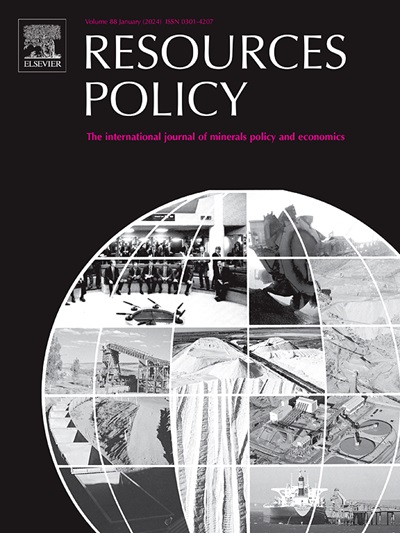金属市场的全球化:利用交叉学习来预测铝和铜的价格
IF 10.2
2区 经济学
0 ENVIRONMENTAL STUDIES
引用次数: 0
摘要
在过去的25年里,铝和铜的价格波动很大,影响了矿业公司、矿业国家的经济和全球金融市场。准确的价格预测有助于更好的预算规划、战略决策和投资组合管理。为了将时间序列预测与商品价格预测的最新发展联系起来,我们研究了最近突出的称为全局预测或交叉学习的框架的性能。与需要预测的每个时间序列使用一个模型的本地方法并列,该框架涉及使用一组相关时间序列来训练单个(全球)模型以创建未来预测。在本文的分析中,我们假设将矿业公司的股票价格纳入全球预测模型,与传统的预测方法相比,可以提高铝和铜价格的预测精度。在这个方向上,我们使用一组辅助时间序列,其中包括两种商品的价格和涉及其生产和加工的主要公司的股票价格,以训练全球前馈神经网络。这些模型在选择训练中使用的相关时间序列的方法上有所不同,它们要么单独使用,要么与标准单变量模型结合使用,以预测未来3个月、6个月和12个月的两种商品价格。然后将模型的性能与基准单变量(局部)模型进行比较,即naïve方法、ARIMA和自回归前馈神经网络。分析表明,通过交叉学习获得的来自不同(尽管相关)市场的信息的整合有利于预测这两种商品的价格,因为对于所检查的所有预测范围,实现最低样本外误差的模型要么是独立的全球模型,要么是局部-全球组合。本文章由计算机程序翻译,如有差异,请以英文原文为准。
Globality in the metal markets: Leveraging cross-learning to forecast aluminum and copper prices
Over the last 25 years, aluminum and copper prices have fluctuated significantly, impacting mining companies, economies of mining countries and global financial markets. Accurate price forecasting can be useful for better budget planning, strategic decision making and portfolio management. To bridge recent developments in time series forecasting with commodity price forecasting, we investigate the performance of a recently prominent framework called global forecasting or cross-learning. Juxtaposed to the local approach, under which one model would be used for each time series requiring forecasts, this framework involves the training of a single (global) model using a set of relevant time series to create future predictions. In our analysis, we assume that incorporating stock prices of mining companies into global forecasting models can enhance the prediction accuracy of aluminum and copper prices compared to traditional forecasting methods. In this direction, we use a pool of auxiliary time series that includes the prices of the two commodities and the stock prices of major companies involved in their production and processing to train global feed-forward neural networks. The models differ in their approach to selecting relevant time series used in training and are either used as standalones or in combination with standard univariate models to forecast the two commodities’ prices 3, 6 and 12 months ahead. The performance of the models is then compared to benchmark univariate (local) models, namely the naïve method, ARIMA, and autoregressive feed-forward neural networks. The analysis suggests that the incorporation of information from different (albeit related) markets achieved through cross-learning is beneficial for forecasting the prices of the two commodities since, for all forecast horizons examined, the models achieving the lowest out-of-sample error were either standalone global models or local-global ensembles.
求助全文
通过发布文献求助,成功后即可免费获取论文全文。
去求助
来源期刊

Resources Policy
ENVIRONMENTAL STUDIES-
CiteScore
13.40
自引率
23.50%
发文量
602
审稿时长
69 days
期刊介绍:
Resources Policy is an international journal focused on the economics and policy aspects of mineral and fossil fuel extraction, production, and utilization. It targets individuals in academia, government, and industry. The journal seeks original research submissions analyzing public policy, economics, social science, geography, and finance in the fields of mining, non-fuel minerals, energy minerals, fossil fuels, and metals. Mineral economics topics covered include mineral market analysis, price analysis, project evaluation, mining and sustainable development, mineral resource rents, resource curse, mineral wealth and corruption, mineral taxation and regulation, strategic minerals and their supply, and the impact of mineral development on local communities and indigenous populations. The journal specifically excludes papers with agriculture, forestry, or fisheries as their primary focus.
 求助内容:
求助内容: 应助结果提醒方式:
应助结果提醒方式:


